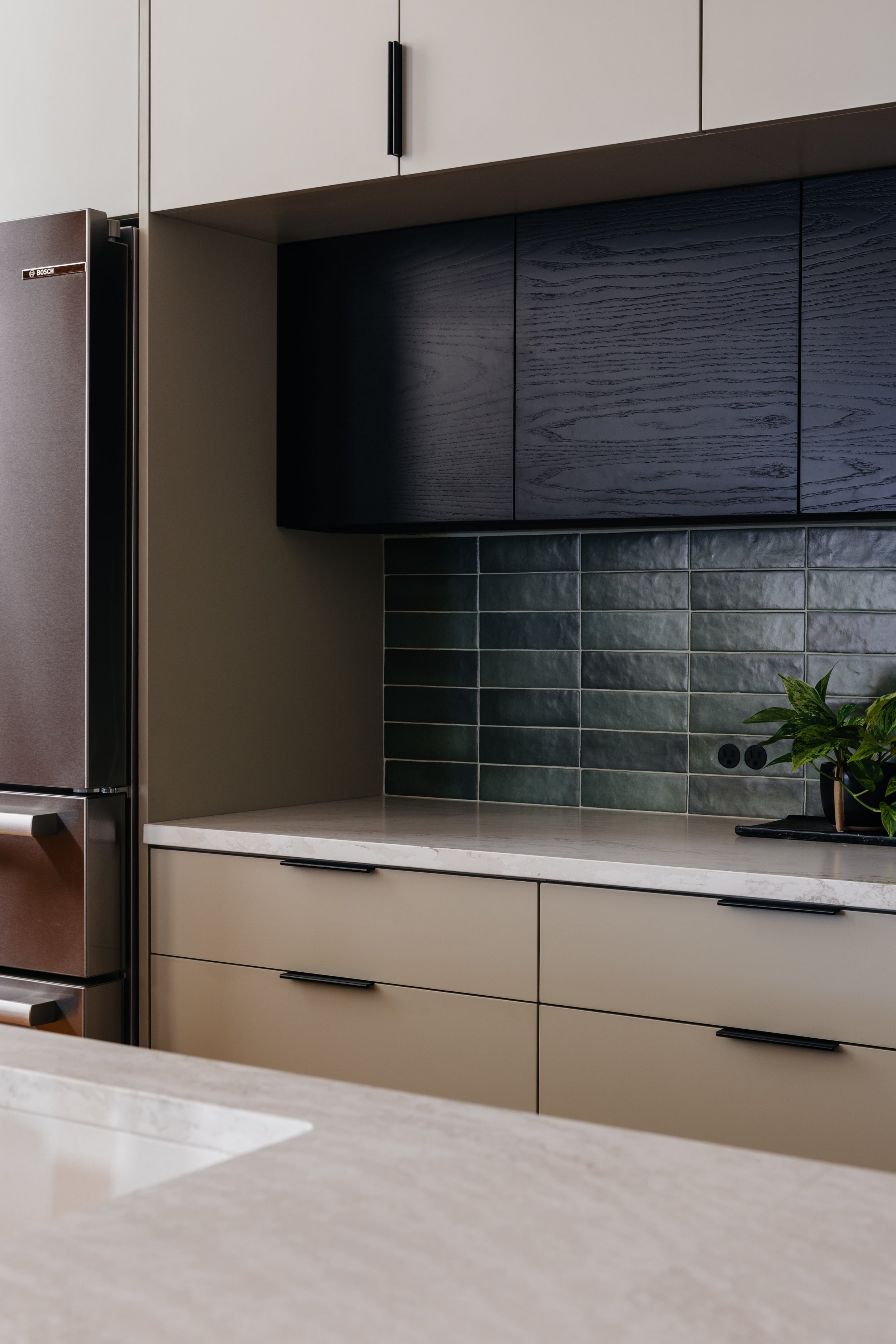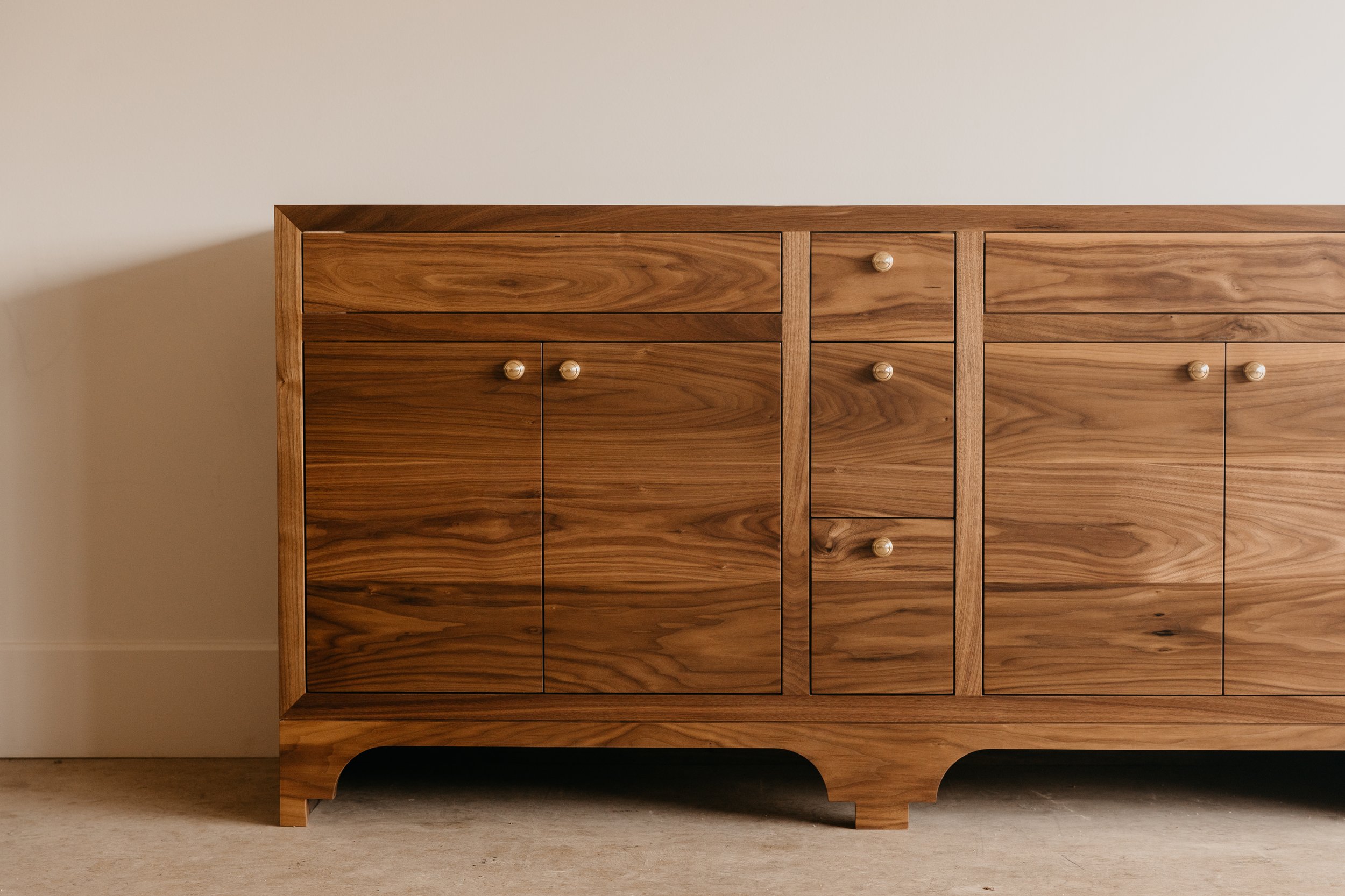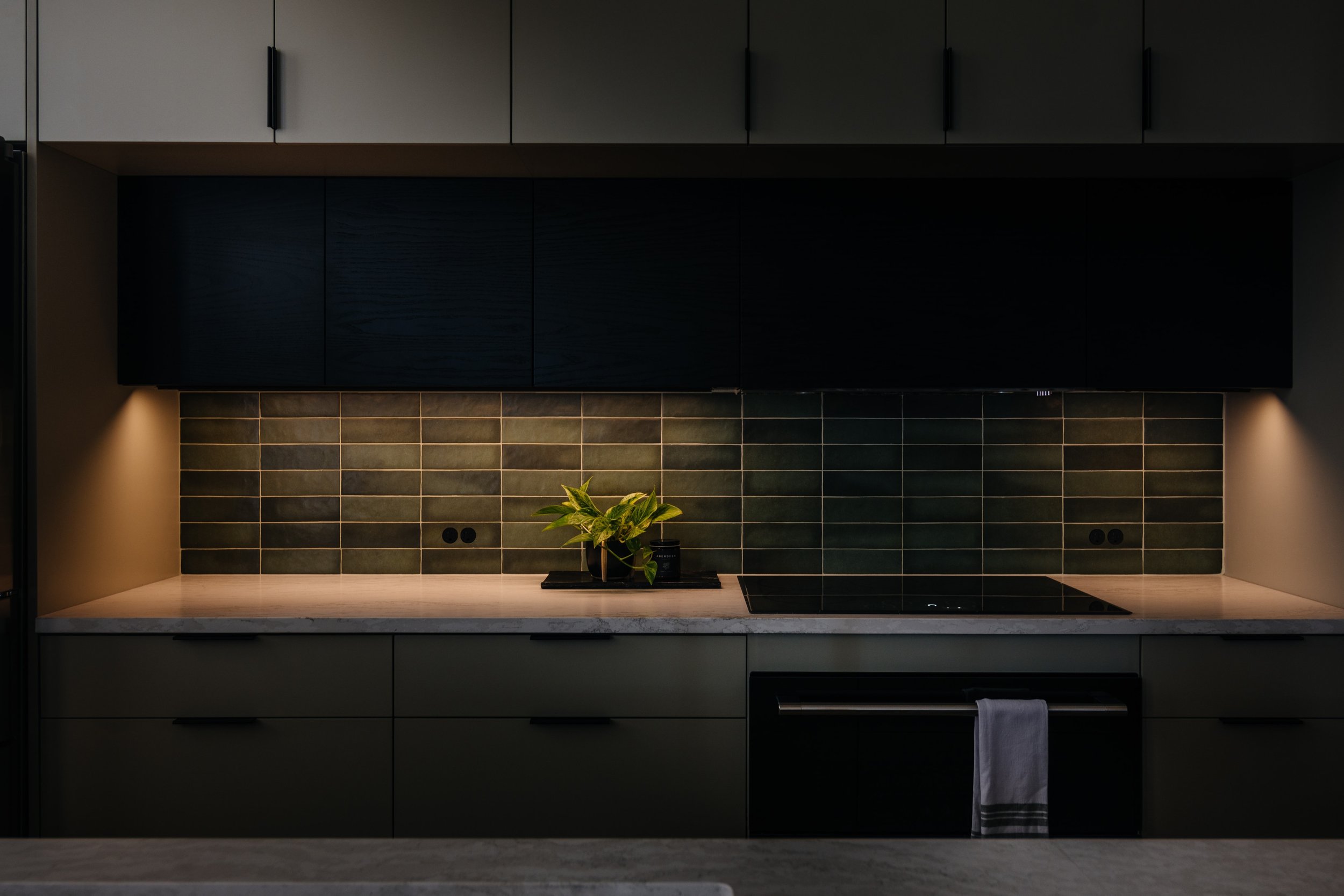Helpful Tips on How to Choose the Right Hardware
Whether you’re a DIY home renovator, an interior designer, or are having a custom furniture piece made by us here at Aberdeen studio, you’re sure to want to read up on our tips for selecting one of the most frequently used and highly visible design details in your home: cabinetry hardware.
Here at Aberdeen studio we often find ourselves immersed in the form versus function conversation and often align with the mid-century design principle that form follows function. However, we always aim for the design to be aesthetically pleasing and consider the end-use case to be a top priority. Cabinetry hardware is one of the few pieces where equal consideration should be given to both performance and aesthetics and must meet your requirements for both daily use and your overall interior design plans.
Choosing hardware for your cabinetry can sometimes end up as an afterthought, especially if you are in the midst of a DIY home renovation and overwhelmed with a long list of design decisions to make. So before you make any final decisions, here are some helpful tips on how to choose the right hardware for your cabinetry.
Pulls/Knobs: The first decision you’ll likely be faced with is between these two types of hardware. There aren’t any strict rules to follow but most people find it easier to open a cabinet with a knob and a drawer with a pull. From a historic design standpoint, knobs are a mainstay of vintage/traditional design, and pulls are often found in more contemporary and modern designed homes. In our design studio, we also incorporate tab pulls which are a happy medium (aesthetically speaking) between a knob and a pull; especially for those who want to use a knob but prefer a more modern look. Often, many people combine the use of both knobs and pulls as part of the overall design schematic, as we did with a recent custom kitchen renovation design and build project in which the client sought a mid-century modern-inspired look.
2. Style: Much like choosing accessories for an outfit, will the style of the knobs and pulls dictate the overall design aesthetic of the room. Heritage-inspired designs tend to include hardware with ridges, curved silhouettes, and textured detailing that will work well in overall traditional interior designed rooms. Sleek and linear-styled hardware with clean lines and a minimal profile tends to work best in more modern-inspired rooms. If the options are overwhelming, deciding whether or not you like square or curved hardware is a good starting point. Keep in mind while choosing a style that you may want to test out your favorites, as some designs will be less comfortable to use than others.
3. Finish: Many designers find that choosing a contrasting finish for your hardware works best in the overall design aesthetic of the room. “In general, warmer toned spaces with brass cabinetry [and] have a vintage feel to them, while cooler tones with darker cabinet hardware lean more contemporary.” Considering the other functional design elements in the room like lighting and faucets is helpful when choosing cabinetry hardware to create a cohesive look that’s reflective of your personal design ethos. Mixing metals among all of the different types of hardware (i.e. faucets, light fixtures) in the room can be an easy way to create visual interest in the space.
(A note that most often the term, “hardware” refers to the types of knobs and pulls on drawers and cabinet shelves but it can also include other kitchen accessories such as task lighting, tray organizers, kitchen faucets, and lighting fixtures; details that also affect the overall look and feel and functionality of the room.)
4. Size: Since cabinet and drawer sizes vary from room to room, a good rule of thumb to follow for selecting cabinet and drawer pulls is a 1:3 ratio. Here are some additional guidelines for varying drawer sizes:
Small: Drawers 12” or less typically work best with a pull that is 3” to 4” long or a knob that is 1” in diameter.
Medium: Drawers between 12” to 30” work well with a pull that is between 4” to 8” long or a knob that is between 1” to 1.5” in diameter.
Large: Drawers 30” to 48"will require a pull that is longer than 8" or a knob that is 1" in diameter or greater. Using two pulls or knobs for a large drawer also works great. [Source: Schoolhouse]
5. Quality: Last but not least to consider is the quality of the pulls and knobs that will directly factor into the overall cost of the cabinetry hardware. For high-quality hardware pieces, you can plan on spending between $6 to $10 for knobs and $7 to $12 for pulls. If you’re in the process of having a custom piece created by us at Aberdeen studio, the cost of the pulls will be included in the total price and we will work with you to create a piece based on your design preferences.
Now that you’re informed on the basics of how to choose the right hardware for your next DIY renovation or interior design project, you’ll know what to expect in the process along with all of the considerations to keep in mind along the way. Take some time to try out different finishes and styles to see what is the best reflection of your personal design style and is the most functional for your day-to-day needs.



